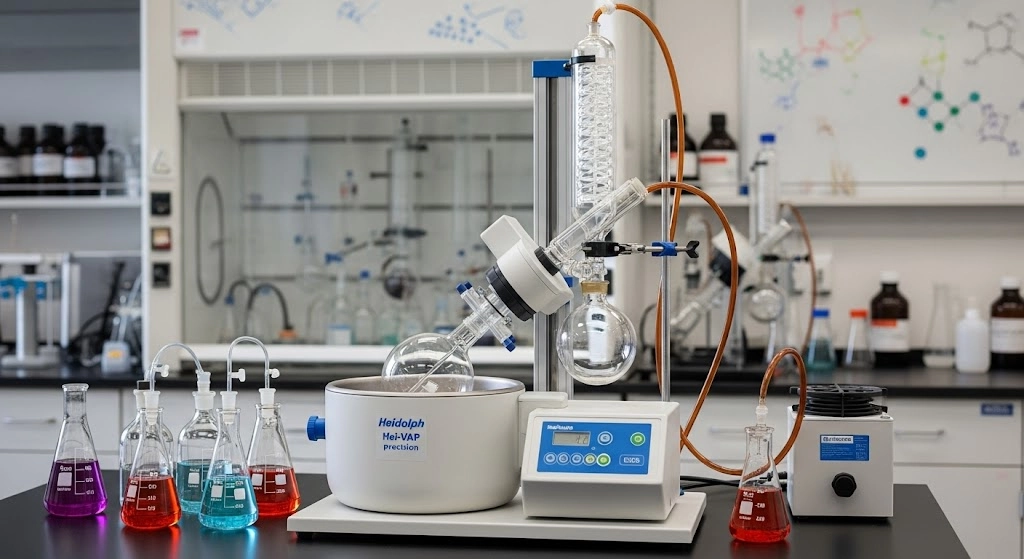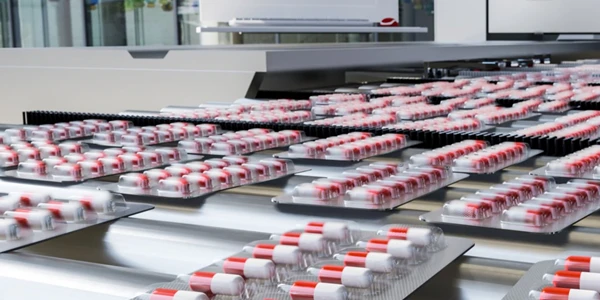Rotary Evaporator: A Comprehensive Guide to Mastering Laboratory Safety

GEMINI (2025)
The rotary evaporator, often colloquially referred to as a rotovap, is a cornerstone of modern chemical and life science laboratories. This sophisticated piece of equipment is designed for the efficient and gentle removal of solvents from samples by evaporation. Operating under a controlled vacuum, it lowers the solvent's boiling point, allowing for rapid distillation at reduced temperatures. This process is crucial for a wide range of applications, including the concentration of reaction products, solvent recovery, and the drying of samples for analysis. From organic synthesis and medicinal chemistry to food science and environmental testing, the rotary evaporator is an essential tool for protecting the integrity of heat-sensitive compounds.
While the rotovap is highly effective, its operation involves inherent risks associated with handling volatile solvents under conditions of heat, vacuum, and rotation. The potential for solvent vapor release, glassware implosion or breakage, and thermal hazards necessitates strict adherence to established safety protocols. This guide is a detailed resource for laboratory professionals, outlining the critical safety considerations for every stage of rotary evaporator use—from initial setup and assembly to operational best practices and emergency response.
Safe Rotary Evaporator Placement and Environment
The safety of any procedure begins with the correct placement of the equipment. A properly located rotary evaporator mitigates external risks and ensures a controlled, safe operating environment.
Non-Explosive and Non-Corrosive Siting
The fundamental requirement for any rotary evaporator installation is a non-explosive and non-corrosive environment. Standard rotovaps are not explosion-proof. The combination of heat and volatile solvent vapors can create a combustible atmosphere. Therefore, the apparatus must be situated in an area free from open flames, sparks, or other ignition sources. Similarly, a corrosive atmosphere can degrade the instrument's components, particularly seals and gaskets, leading to vacuum leaks, solvent vapor release, and potential equipment failure. Regular maintenance and proper environmental controls are paramount to preventing such issues.
The Critical Role of Fume Hoods
The most effective way to manage the risk of solvent vapor exposure is to operate the rotary evaporator within a chemical fume hood. The hood’s constant air flow captures any escaped vapors from the flask, condenser, or collection vessel, drawing them safely away from the user and into the laboratory’s exhaust system. This prevents the accumulation of toxic or flammable vapors in the lab atmosphere, which can pose a significant inhalation or fire hazard. While some manufacturers offer protective shields for use outside a fume hood, these are not a substitute for proper ventilation. They should only be used in accordance with the manufacturer's specific guidelines, such as when using a non-volatile, high-boiling solvent or with a low-temperature heating medium (<90∘C).
Physical and Environmental Considerations
Beyond chemical risks, the physical placement of the unit is vital. The chosen location should be flat, stable, and free from vibration or impact. Vibrations can cause the sample to "bump" or splash vigorously during evaporation, leading to sample loss or contamination. Furthermore, a stable surface is crucial for maintaining the integrity of the glassware under vacuum and for ensuring the emergency lift mechanism functions correctly. The clearance around the apparatus is a frequently overlooked but critical safety factor. Modern rotary evaporators are equipped with a motorized lift that automatically raises the evaporation flask from the heating bath in the event of a power failure or emergency. Ensuring that the lift drive has a completely unobstructed path prevents the flask from remaining in the hot bath, where it could overheat and potentially ignite residual vapors or cause a thermal runaway event.
Rotary Evaporator Assembly Best Practices
Before any operation begins, meticulous assembly and a thorough inspection of all components are mandatory.
Correct Equipment and Integrity Checks
All tubing, glassware, and accessories used with the rotary evaporator must be the correct type and size for the specific apparatus. "Making do" or retrofitting components can lead to leaks and compromised vacuum integrity. Tubing for the condenser and vacuum pump should be rated for both vacuum and temperature and be regularly inspected for cracks or brittleness. The glassware, particularly the evaporation flask and condenser, must be checked for chips, cracks, or scratches before each use. Damaged glass is prone to catastrophic failure under vacuum and heat. The use of plastic-coated glass flasks is highly recommended as a preventative measure, as the coating can contain the contents and glass fragments in the event of breakage.
The Assembly Sequence
A consistent and methodical assembly sequence minimizes the risk of human error. Always begin with the power switch in the OFF position to prevent accidental activation. Secure the evaporation flask and condenser, ensuring all connections are snug but not overtightened. Before lowering the flask, check that its rotation path will not contact the walls or floor of the heating bath. This simple check prevents potential breakage and splashing once the unit is operational. Most importantly, never operate the rotary evaporator without a functional condenser. The condenser is designed to capture and cool the solvent vapor, returning it to a liquid state in the collection flask. Operating without it would release all solvent vapors directly into the laboratory, posing a severe poisoning and fire risk.
Safe Solvent and Sample Handling with a Rotary Evaporator
The very purpose of a rotary evaporator is to handle solvents, making their proper management a core safety concern.
Solvent Compatibility and Reactivity
Before beginning the evaporation process, you must confirm the chemical compatibility of your solvent with the apparatus's components, including the tubing, seals, and gaskets. While common solvents like ethyl acetate and hexanes are generally compatible, highly aggressive or reactive solvents may degrade these components over time, leading to leaks. It is crucial to consult the Safety Data Sheet (SDS) for your solvent to understand its reactivity and ensure it is safe to handle within the system. Additionally, the distillate and residual solvent vapor may have different reactivities or toxicity profiles than the original solvent. You must be aware of these properties to ensure proper handling during ventilation and disposal.
Managing Sample Volume and Weight Limits
The temptation to overload the evaporation flask can lead to serious hazards. Overfilling the flask not only increases the risk of "bumping" but also places an excessive load on the instrument's lift drive. Exceeding the weight limit can cause the flask to drop catastrophically, potentially releasing a large volume of hazardous material into the heating medium and the surrounding area. To prevent this, always adhere to the recommended maximum volume and weight limits specified by the manufacturer.
Rotary Evaporator Operational Safety and Monitoring
Once the apparatus is assembled and the sample is loaded, vigilant monitoring is required throughout the operation.
The Heating and Cooling Systems
The heating bath provides the thermal energy required for evaporation. It is essential to use a heating medium that is compatible with the intended solvent and sample. Glycol-based heating media are often preferred for water-based samples as they can help prevent violent expulsion in the event of fluid contact. Never set the heating bath temperature above the ignition temperature of the heating medium itself, or above the flash point of the solvent being evaporated. The heating bath should also be kept appropriately filled, as operating a dry bath can cause the heating coil's temperature to dramatically exceed the set point, posing an extreme fire hazard. Similarly, an overfilled bath can overflow when the flask is lowered, creating a splash risk.
The chilling condenser is equally critical. It must be monitored throughout the process to ensure it is functioning correctly. Failure of the condenser (e.g., due to loss of coolant flow) will allow solvent vapors to escape, potentially leading to a dangerous operating condition. In such an event, the vacuum should be released, and the heat turned off immediately.
Critical Monitoring and Automation
For a single-user setup, direct monitoring of the rotation speed and temperature is key to ensuring even evaporation and preventing sample caking or overheating. For labs with multiple rotary evaporator units, visual aids like color-coded stickers can prevent users from mistakenly adjusting the wrong unit's parameters. Modern, programmable rotovaps can enhance safety by automating routine processes, helping to prevent operator error and ensuring consistent, reproducible conditions. However, the user must understand the full scope of the program's functions and stand clear during automated changes in rotation speed, lift position, or temperature to avoid splashes or mechanical injury.
PPE and Emergency Procedures for Rotary Evaporator Use
Even with the most rigorous procedural controls, accidents can happen. Proper personal protective equipment (PPE) and a clear understanding of emergency protocols are the final layers of defense.
The PPE Mandate
At a minimum, appropriate PPE must be worn at all times. This includes a laboratory coat, chemical-splash goggles or a full face shield, and chemical-resistant gloves. In the event of glassware breakage or a spill, this equipment provides a critical barrier against chemical exposure and thermal burns.
Unique Risks and Mitigation
The operation of a rotovap presents several specific hazards that require additional awareness.
Cryogenic Hazards: When using a cold trap with dry ice, be aware of the extreme cold (
<−78.5∘C ) which can cause severe frostbite. Always use insulated gloves. Additionally, the sublimation of dry ice to carbon dioxide (CO2 ) gas can displace oxygen in a confined space. Ensure adequate ventilation to prevent this from creating an asphyxiation risk.Burn and Mechanical Risks: The heating bath and the evaporation flask are significant burn hazards. Always allow components to cool before handling. Be alert to the ergonomic risks of handling large, heavy flasks, and consider using lifting aids to prevent injury.
Noise Hazards: If an optional vacuum pump is used, it can produce a significant amount of noise. Consider the location of the pump and the duration of exposure. Some vacuum pump manufacturers offer speed control options to reduce noise emissions.
Emergency Protocols and Training
Every laboratory professional must be familiar with their equipment's fail-safe mechanisms. Most modern units are designed to automatically lift the flask from the heating bath in the event of a power failure. Ensure that this lift path is never obstructed. It is also crucial to be familiar with the various alarms and alerts the device can produce, so you can respond quickly and appropriately to a warning without needing to consult a manual in a stressful situation. In the event of a coolant failure, immediate action must be taken to stop the process and prevent the release of solvent vapors.
Achieving a Safe Laboratory with Your Rotary Evaporator
The rotary evaporator is an invaluable tool for chemical synthesis and sample preparation, but its power comes with responsibility. The technical considerations and procedural guidelines outlined above are not merely a checklist; they form the basis of a proactive culture of safety. By integrating these practices into your daily work, from the initial placement of the apparatus to the final disassembly and cleaning, you can mitigate the inherent risks. A combination of proper training, consistent vigilance, and respect for the chemical and physical processes at play will ensure a safer, more productive, and more secure laboratory environment for all.
Frequently Asked Questions (FAQ) about Rotary Evaporator Safety
What are the key safety considerations for operating a rotary evaporator?
The primary safety considerations involve managing the risks of solvent vapors, glassware implosion or breakage, and thermal hazards from the heating bath. This is achieved through proper equipment placement in a fume hood, meticulous assembly, and continuous monitoring of the unit during operation.
Why is a fume hood mandatory for using a rotary evaporator?
Operating the rotovap in a fume hood is critical for capturing and safely removing any toxic or flammable solvent vapors that may escape the system. This prevents the vapors from accumulating in the laboratory environment, which could pose a significant fire hazard or an inhalation risk to personnel.
How should I handle a glassware breakage or solvent spill during rotovap operation?
In the event of glassware breakage or a spill, immediately release the vacuum, turn off the heat, and shut down the unit. Allow the components to cool before attempting to contain and clean up the spill according to your laboratory's safety protocols and the solvent's SDS. Using plastic-coated glass flasks can help contain the contents and prevent injury if the flask shatters.
What are the temperature safety guidelines for a rotary evaporator's heating bath?
Never set the heating bath temperature above the flash point of the solvent being evaporated or the ignition temperature of the heating medium itself. Additionally, always ensure the heating bath is filled to the correct level, as an overfilled bath can overflow, and an underfilled bath can cause the heating coil to exceed its set temperature.










